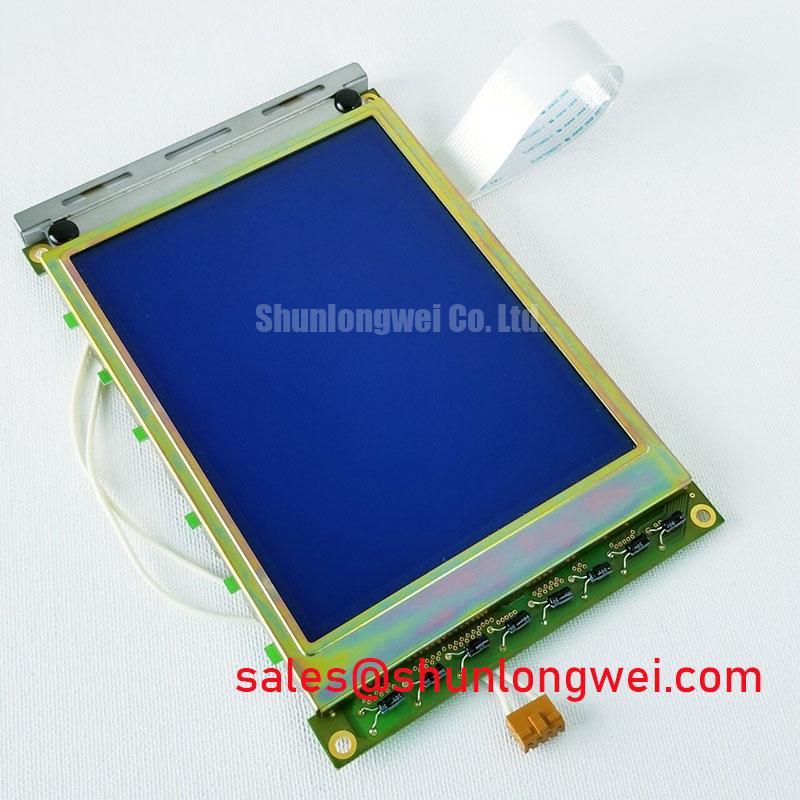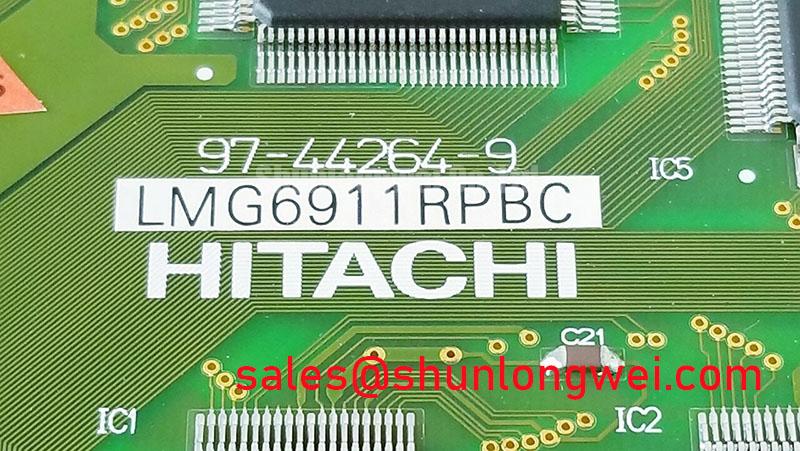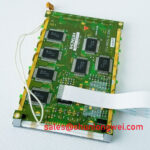Content last revised on November 19, 2025
LMG6911RPBC | 240x128 FSTN Graphic LCD with Integrated Controller
Engineering a Clearer, Simpler Human-Machine Interface
The LMG6911RPBC streamlines embedded HMI design with its integrated controller, delivering high-contrast visuals for demanding instrumentation. This module features a 240x128 Resolution | FSTN Monochrome Display | Integrated T6963C-Compatible Controller. Key engineering benefits include significantly simplified system integration and enhanced readability from a wider viewing angle. With its integrated controller and 8-bit parallel interface, the LMG6911RPBC offloads the host MCU from graphics and text rendering tasks. For legacy system maintenance or new designs requiring a robust, straightforward graphic HMI, the LMG6911RPBC offers a proven and efficient solution.
Key Parameter Overview
Decoding the Specs for Simplified System Integration
The specifications of the LMG6911RPBC are tailored for straightforward implementation in industrial and medical equipment. The choice of FSTN technology and an onboard controller directly impacts both visual performance and the engineering effort required for integration.
| Parameter | Value | Engineering Significance |
|---|---|---|
| Display Technology | FSTN (Film-compensated Super-twisted Nematic) | Provides superior contrast and a wider viewing cone compared to older STN technologies, ensuring data is clearly legible from multiple angles. |
| Display Resolution | 240 x 128 Dots | Offers sufficient pixel real estate for displaying multiple lines of text, status icons, and simple graphical data like waveforms or bar charts. |
| Controller IC | T6963C Compatible | This integrated controller is the cornerstone of design simplification. It manages the display RAM and command execution, freeing the host microcontroller to perform its primary application tasks. |
| Interface | 8-bit Parallel | A widely understood and easy-to-implement interface for embedded systems, ensuring broad compatibility with many microcontrollers. |
| Backlight | CCFL (Cold Cathode Fluorescent Lamp) | Delivers bright, even illumination for high readability. Requires an external high-voltage inverter, which must be factored into the power budget and PCB layout. |
| Operating Temperature | -5°C to +40°C | Suitable for controlled indoor environments typical of laboratory, medical, and factory floor instrumentation. |
Download the LMG6911RPBC datasheet for detailed specifications and performance curves.
Application Scenarios & Value
System-Level Benefits in Instrumentation and Control
The LMG6911RPBC is engineered for applications where clear data presentation and reliability are paramount. Its feature set provides tangible value in specialized equipment where a full-color display may be unnecessary or impractical.
Consider the design of a portable environmental gas analyzer. The primary engineering challenge is to create a responsive device where the main microcontroller is dedicated to rapid sensor data acquisition and processing. The HMI must be clear and functional without consuming critical processing cycles. The LMG6911RPBC directly solves this. Its FSTN technology provides the high-contrast readability needed for field use. More importantly, its integrated T6963C controller manages the display buffer, character sets, and graphics primitives. This allows the host MCU to simply send high-level commands, offloading the intensive task of screen refreshing and enabling the core system to maintain peak performance.
- Test and Measurement Equipment: Ideal for oscilloscopes, spectrum analyzers, and power supplies where numerical data and simple waveforms must be displayed with high clarity.
- Industrial Control Panels: Provides a robust operator interface for process monitoring, system status updates, and parameter setting in factory automation.
- Medical Devices: Suitable for patient monitors and diagnostic equipment that require unambiguous display of vital statistics and operational data.
While the 240x128 resolution of this display is suitable for many data-rich applications, for systems requiring a different layout or feature set, the related LMG6912RPFC may present an alternative architecture to evaluate.
Frequently Asked Questions (FAQ)
Getting the Most from the LMG6911RPBC
What is the primary benefit of the FSTN (Film-compensated Super-twisted Nematic) display over standard STN?
FSTN incorporates an additional retardation film that corrects for color dispersion, resulting in a true black-and-white display with significantly higher contrast and a wider, more forgiving viewing angle. This directly translates to better readability for the end-user.
Does the LMG6911RPBC require an external graphics controller?
No, it features a built-in T6963C-compatible controller. This is a major advantage as it contains the necessary display RAM and logic to manage the screen, simplifying the hardware design and reducing the software burden on the host microcontroller.
What are the power supply requirements for both the logic and the CCFL backlight?
The module's logic typically requires a standard +5V supply. The CCFL backlight, however, needs a separate high-voltage AC source, which is provided by an external CCFL inverter. This inverter circuit is a critical component of the overall system design.
How does the integrated T6963C-compatible controller simplify software development?
The controller handles low-level tasks like pixel refreshing and memory addressing. The developer interacts with it via a set of high-level commands for functions like clearing the screen, setting the cursor position, and writing text or graphics data. This abstracts away the complexity of direct pixel manipulation, speeding up firmware development.
What is the typical lifespan of the CCFL backlight and what design considerations does it impose?
CCFL backlights typically have a lifespan rated in tens of thousands of hours, often specified as time to half-brightness. A key design consideration is the need for a dedicated CCFL inverter, which must be properly integrated into the system's power and thermal management scheme. For a deeper understanding of display longevity, exploring the differences between industrial and consumer display technologies is beneficial.
Technical Deep Dive
A Closer Look at the Integrated Controller and Interface Architecture
The engineering value of the LMG6911RPBC is fundamentally tied to its T6963C-compatible controller. This component acts as a bridge between the host system's high-level requests and the low-level pixel-driving requirements of the LCD panel. Its architecture is designed to minimize the host's workload through an intelligent division of labor.
The controller features an on-chip display data RAM (DDRAM) that is separate from the host system's memory. This is crucial. It means the host processor does not need to allocate its own RAM to serve as a framebuffer, nor does it need to continuously run a refresh routine. Instead, the host writes text or graphic data to the controller's internal RAM once, and the controller handles the repetitive task of scanning this memory and driving the corresponding pixels on the screen. This is a classic "fire and forget" approach that frees up invaluable MCU cycles.
Think of the integrated controller as a dedicated administrative assistant for the display. Instead of the main processor (the CEO) having to micromanage every single pixel, it simply issues a high-level command like, "Display this status message at position X,Y." The assistant (the controller) handles all the low-level details of looking up character patterns and activating the correct pixels, freeing up the CEO to focus on critical calculations from the system's sensors. This streamlined workflow is a core reason why modules like the LMG6911RPBC became staples in robust industrial HMI design.
An Engineer's Perspective
For projects where the design goals are reliability, clarity, and rapid development, the LMG6911RPBC remains a highly relevant component. It represents a design philosophy focused on functional simplicity. By integrating the core display driving intelligence, it allows engineers to focus on their application's unique value rather than the complexities of low-level display control. It is a workhorse solution for instrumentation that needs to present critical data clearly and dependably, without the overhead of modern, full-color graphic systems.










